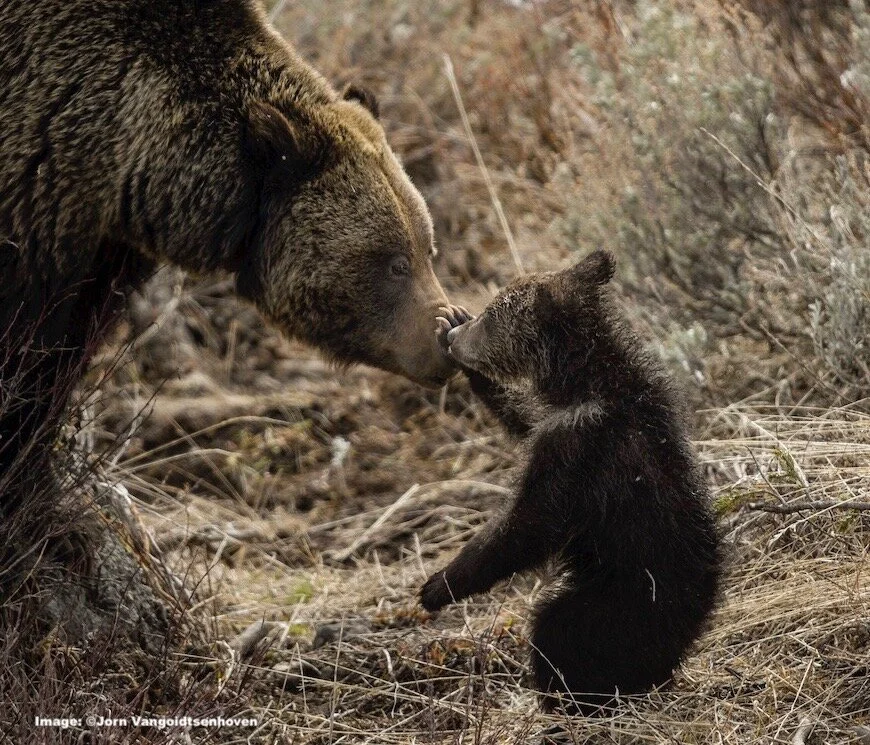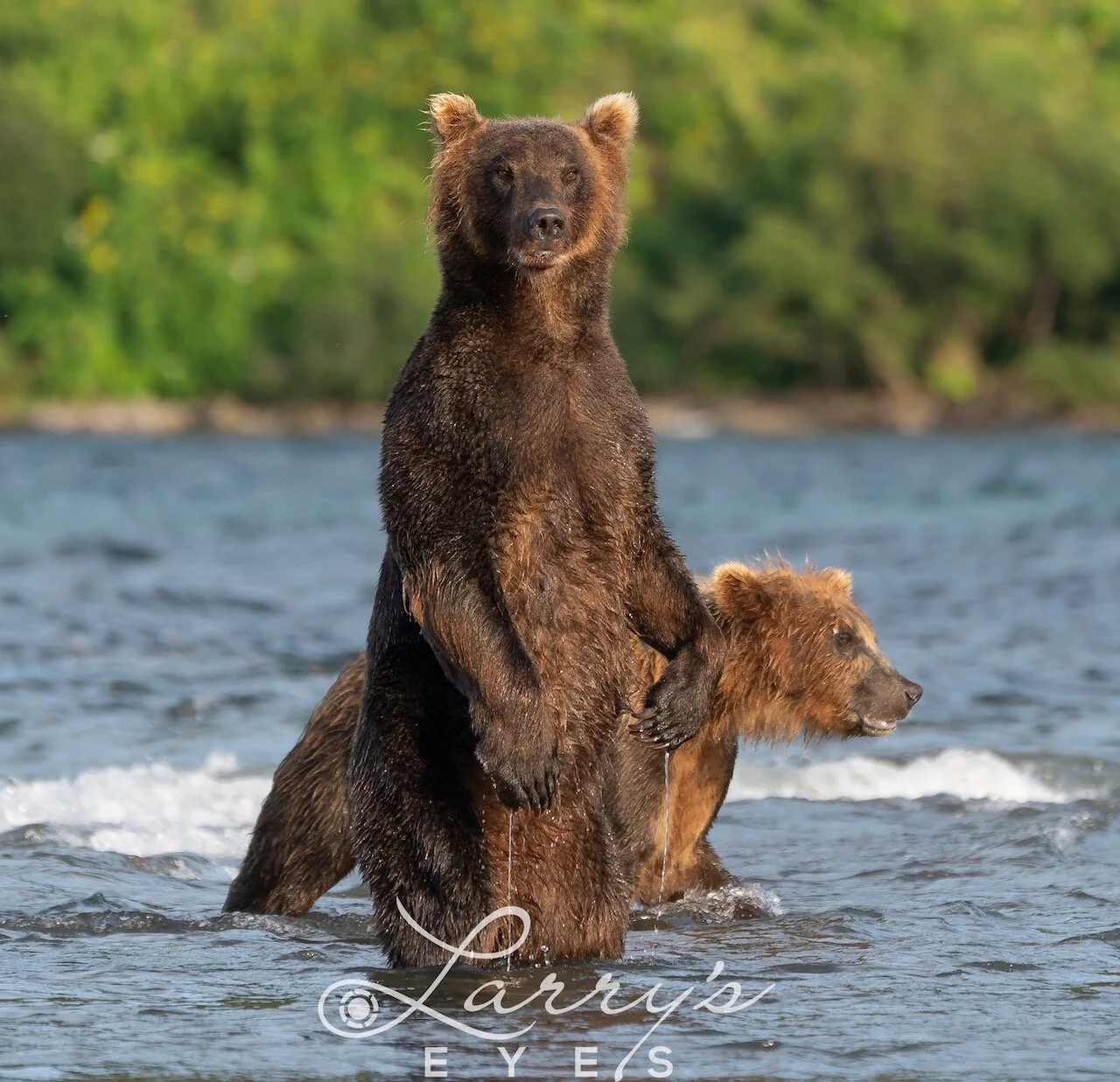Grizzly bear #863, known as Felicia by her thousands of fans, is a roadside bear under pressure. Commercial and general traffic, humans behaving badly, understaffed federal and state agencies with overlapping, unclear jurisdictions all combine on a section of Wyoming highway. The result is a very uncertain future for grizzly bear, Felicia and her cubs. What is the answer to wildlife survival in a world full of humans?
Read MoreAmerica’s wild horses, our Mustangs, are an icon of the old west. Brought here by the Spanish explorers in the 15th and 16th Century, escaped horses quickly became feral and thrived in the open plains and grasslands. Some re-captured horses became integral to the lives of the human population, both Native American and immigrants to the New World - while others remained free to roam. Jorn Vangoidtsenhoven fell in love with them at first sight and looks into the modern controversy that threatens them.
Read MoreThe Kamchatka Peninsula, 4205 miles / 6767 km from Moscow in Russia’s far east, is not an easy trip, as wildlife photographer Larry Blau will readily tell you. Kamchatka is a land of volcanos and brown bears, and fewer than 400,000 resilient people spread thin over a few small towns and villages. The journey involves long plane rides, military-style helicopters, more hours overland in a KAMAZ, and then over water in a high-speed pontoon boat. But what you experience in Kamchatka will stay in your soul forever. Bring your camera.
Read MoreA year of pandemic lockdown has made us hungry for open spaces and where better to experience them than in our National Parks? The United States is a country with mind bending diversity. The number of wildlife (432 mammals), and birds, (800) species alone are staggering and they are spread out over a land comprised of 7 different biomes: Tundra, taiga, tropical rainforest, temperate rainforest, grasslands, desert and alpine. LExplore 4 of our favorites, Yellowstone with Grand Teton National Parks, Big Cyprus National Preserve, The Charles M. Russell National Park, and El Yunque National Forest in Puerto, Rico.
Read MoreThe mustangs is part of the lore of the American West. Wild horses, descendants of domesticated horses first brought by early explorers and settlers, still roam the west. For wildlife photographer Jorn Vangoidtsenhoven, his first meeting with these magnificent creatures in Arizona’s Salt River in the Tonto National Forest was a surprise; he quickly fell in love with them. These are his favorite places and best tips for photographing America’s wild horses.
Read MoreZebra. What does a predator see? In Kenya, zebra and wildebeest graze together. Why? A moving mass of stripes in at least five distinct tonalities (two for zebra, three for blue wildebeest). To human eyes, even when frozen in place in a photograph, the black and white of a group of zebra disguises how many individuals occupy the frame. It takes a moment for the brain to resolve it. Mark Seth Lender asks, Does it give the lion a headache?
Read MoreExperiencing Mongolia had been a dream for photographer Larry Blau since he was child, but the world was changing. Would he still find its ancient heart as Mongolia marches toward modernism? Larry discovered that age-old traditions are still practiced against the backdrop of Mongolia’s incomparable landscapes. Eagle hunters, camels racing over the Gobi’s dunes, and feasting in the family ger are still all part of the today’s Mongolia. You just have to look beyond the city.
Read MoreWhen self-described nature lover and armchair adventurer, Nancy Langer, traveled to the Brazilian Pantanal, her goal was to take the ultimate jaguar photograph. Still, Nancy got more than she bargained for; she watched wild jaguar in action from her vantage point in the river, stayed on a floating hotel, braved bridges with holes in the floor - and even identified and got to name a jaguar for scientific research! It was the adventure of a lifetime.
Read MoreListening, watching, hunting, and even a good stretch. It’s all part of survival for delicate Arctic fox. For over forty years, twice as long as the longest life span of the longest-lived predator, huge white Tundra Buggies have carried visitors over the icy expanse of the remote southwestern shores of Hudson Bay, Churchill Point, Manitoba. They keep both visitors and wildlife safe. The Tundra Buggies are part of the scenery, part of the icy world. The animals do not seem to notice the eyes watching from inside.
Read MoreThe coastal brown bears of Katmai National Park are famous world-wide. The bears, mostly un-hunted, living in the rugged, remote, and breathtakingly beautiful Alaska Archipelago don’t seem to mind the respectful wildlife enthusiasts and photographers that arrive to experience them each summer. Wildlife photographer and guide, Scott Stone, has a passion for the gentle giants.
Read MoreCreating great bird photography is not just a matter of buying “the best” equipment. It requires skill, patience and a lot of practice to master the techniques to such an erratic subject - but there are some helpful tricks. Wildlife photographer, Jorn Vangoidtsenhoven shares his tips for getting great bird images in the wild.
Read MoreThe Lowveld has been called "The Real Africa" as it is host to over 700 different bird and mammal species - including the sought-after Big Five. Much of it is protected and accessible to nature lovers. The region’s broad valleys, located on the eastern side of South Africa, drop down the great Drakensburg Escapement from the Highveld. In this low-lying subtropical climate, broad-leaved trees and thorn trees co-exist in relatively open woodland, interspersed with long grass, lots of wildlife and incredible birds.
Read More











